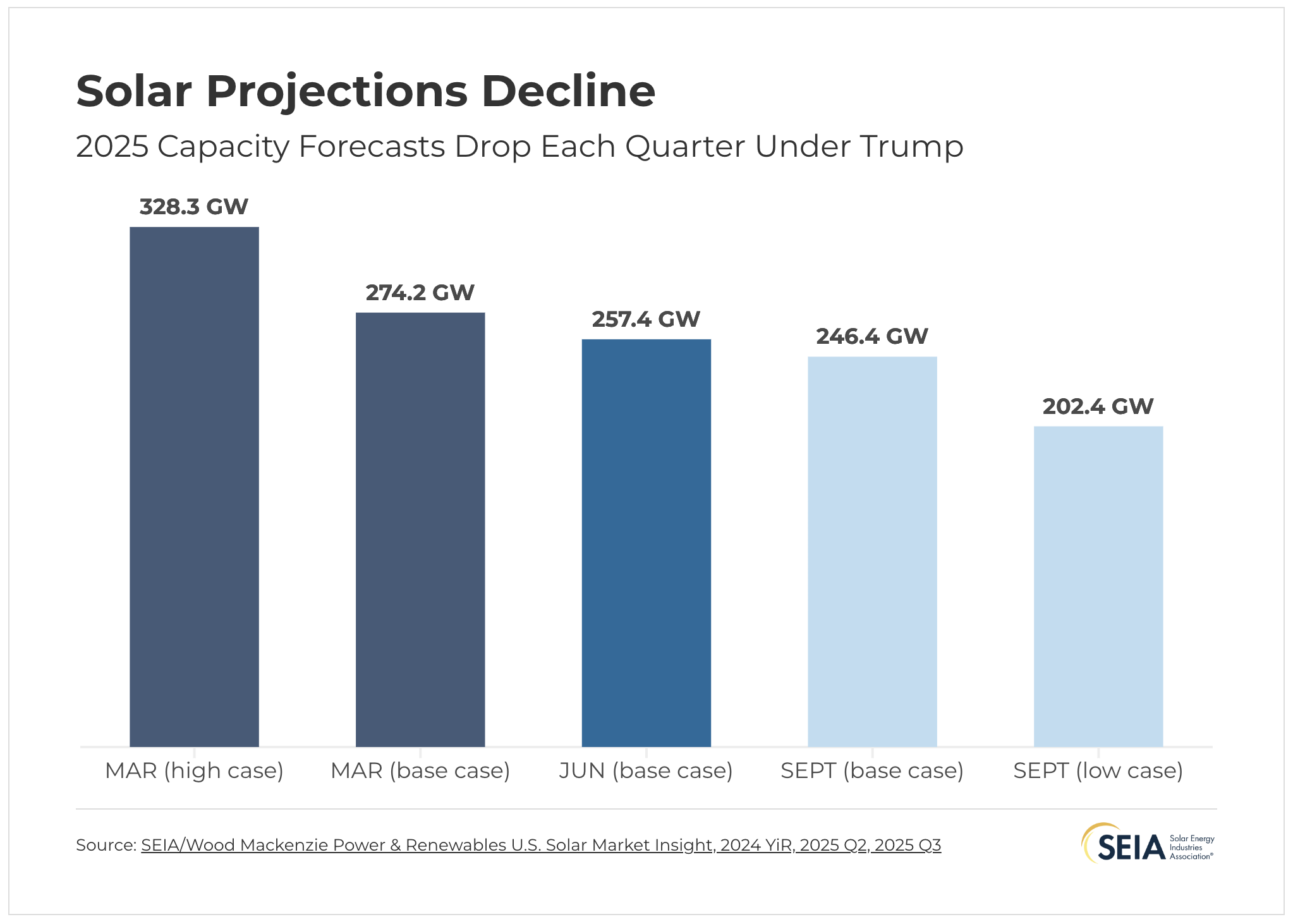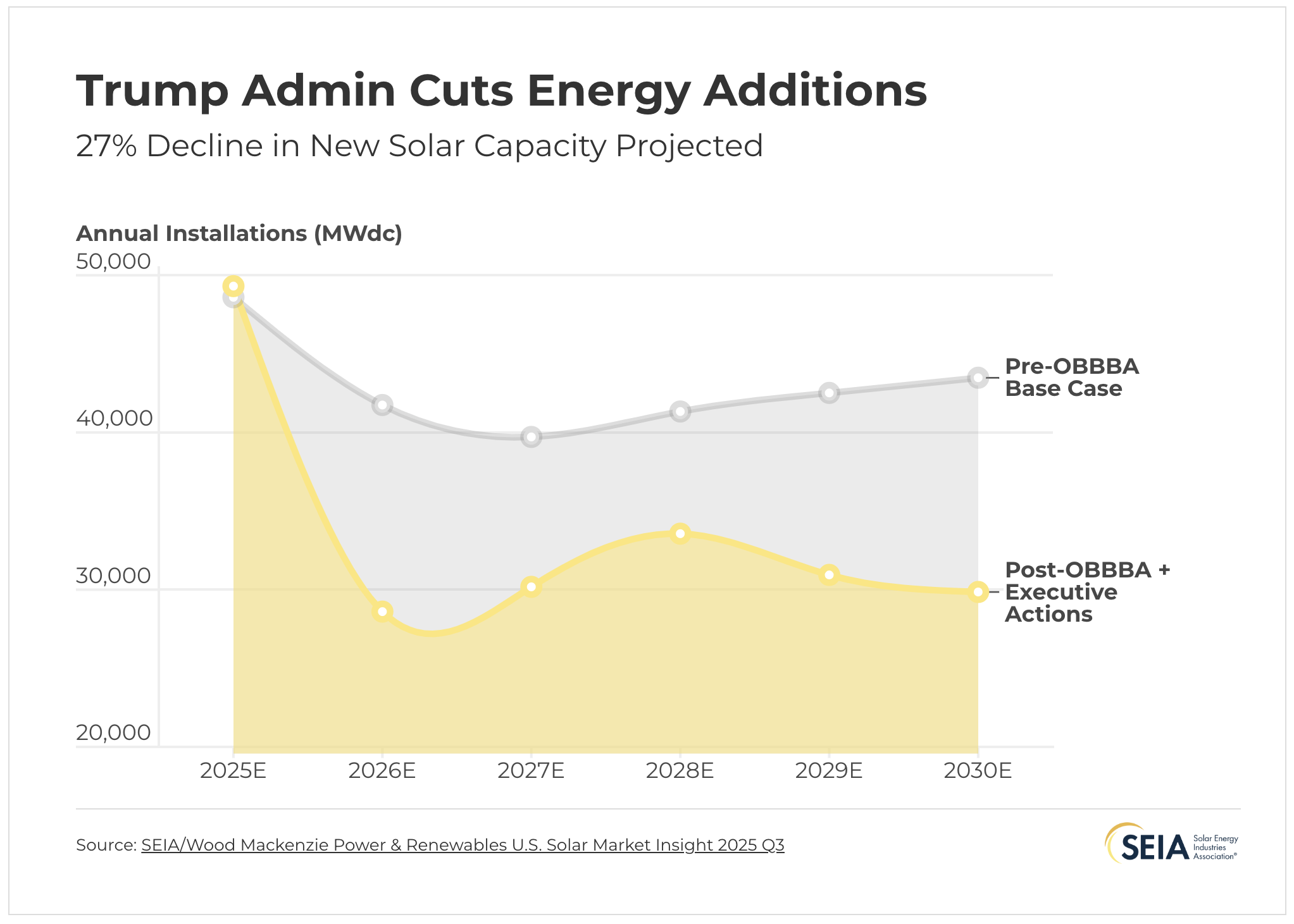Support CleanTechnica’s work through a Substack subscription or on Stripe.
The Trump Administration is waging an unprecedented, cross-agency campaign to restrict clean energy deployment. Between the upending of tax policy, new punitive, anti-solar regulation, and an unabashed pro-fossil fuels agenda, this administration is creating instability that is scaring off investors, weakening grid reliability, and driving up electricity prices.
At the same time the federal government is creating needless roadblocks for America’s fastest-growing generation sources, electricity demand is growing faster than any time since World War II driven by new data centers and electrification.
This growth in demand and restriction of supply is forcing millions of Americans to foot the bill for the Trump administration’s campaign against clean energy and imperiling the reliability of our grid for homes and businesses alike.
Curtailing the Solar Surge
In 2024, solar added more new capacity to the U.S. grid than any energy technology in the past two decades. Solar has been the largest contributor of new generation capacity every since 2021, and that momentum is continuing in 2025.
However, the Trump Administration is throttling this exceptional growth of energy supply at every turn. Starting with the direct tax implications of HR 1, this strategy of energy subtraction has undermined solar and storage projects across the country. The Department of Energy has cancelled critical grid improvements and illegally clawed back billions in solar grants. The Department of the Interior has created additional bureaucratic huddles for solar projects near federal lands, slowed permitting reviews to a craw, and cancelled the review of the largest solar projects in the country. Additionally, upcoming guidance on HR 1’s tax provisions could further restrict financing and undermine energy development.
Together, these actions have dramatically slowed down solar deployment and created a hostile environment for investors and developers that is causing jobs losses and project cancellations.
Falling Short
In SEIA’s and Wood Mackenzie’s U.S. Solar Market Insight (SMI) 2024 Year in Review released in March, forecasts showed a consistent pace of more than 40 GW of new solar additions annually through 2030. However, due to the onslaught of energy subtraction policies, forecasts for new solar deployment have declined each quarter that President Trump has been in office. The low-case forecasts in the latest SMI report show that these policy attacks could result in a 27% decline in new solar capacity from 2026–2030.
As the largest driver of new electricity generation, this drop in solar output will significantly hinder America’s economy.
Solar forecasts over the next five years have plummeted a staggering 125 GW since March. That’s more lost solar capacity in just a few months than all the new gas and coal plants built over the last decade combined.
Losing that much solar will hit the U.S. grid hard, weakening reliability and driving electricity prices higher.
Demand Dilemma
Falling solar deployment is particularly problematic given the skyrocketing pace of U.S. electricity demand.
From electrification to AI, America is expected to see massive jumps in electricity demand in the coming years. Data center electricity needs are expected to triple by 2028, while new manufacturing and the electrification of transportation and buildings will further strain the grid.
Without solar and storage, new electricity supply cannot keep up with demand.
Development timelines for new gas, coal, and nuclear plants are simply too slow to meet these new demands, and mounting backorders of natural gas turbines could delay these sources further. Even with the Trump Administration throwing billions of dollars at fossil fuels, planned additions have barely budged. Zero new coal plants have been announced in 2025, and only a few natural gas plants have begun development.
For every new GW of planned gas capacity added in 2025, Trump Administration policies have undermined about 9 GW of new solar additions.
America is already witnessing a historic increase in energy prices, and the Trump Administration’s needless war on clean energy is cutting off supply at precisely the wrong time. As with any product, when supply is limited and demand spikes, prices go up. However, when electricity prices spike, the new costs reverberate throughout the economy.
Farmers and small businesses will scale back spending as they’re forced to spend more on electricity. Manufacturing, construction, and other energy-intensive industries will see even tighter margins and potential closures. Every American family will have to make difficult decisions between keep their lights on and paying their other monthly bills.
Electricity is one of the fundamental inputs of economic production. When electricity is cheap, every sector of the economy benefits. However, when electricity is expensive, every sector is forced to raise prices. The Administration’s energy policy is restricting supply at a moment of historic demand — and thus walking America into a dangerous inflationary trap.
The solar and energy storage industry has been (and is eager to continue) supplying the nation with affordable, reliable, abundant power. The Trump Administration simply needs to let us compete.
Article from SEIA. Charts from SEIA/Wood Mackenzie Power & Renewables U.S. Solar Market Insight 2025 Q3.
Sign up for CleanTechnica’s Weekly Substack for Zach and Scott’s in-depth analyses and high level summaries, sign up for our daily newsletter, and follow us on Google News!
Have a tip for CleanTechnica? Want to advertise? Want to suggest a guest for our CleanTech Talk podcast? Contact us here.
Sign up for our daily newsletter for 15 new cleantech stories a day. Or sign up for our weekly one on top stories of the week if daily is too frequent.
CleanTechnica uses affiliate links. See our policy here.
CleanTechnica’s Comment Policy






